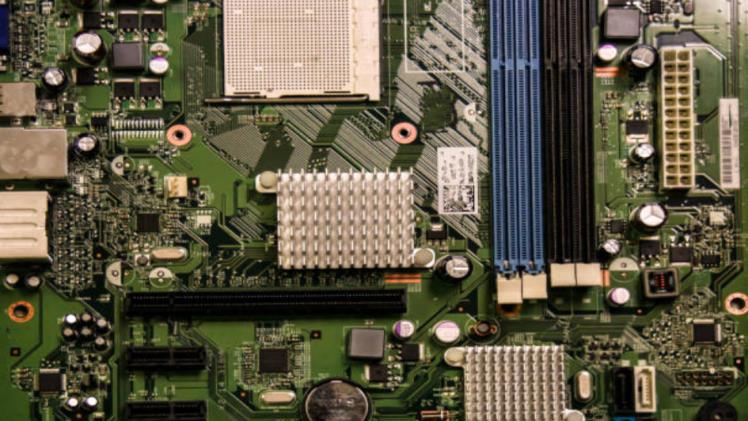In the ever-evolving landscape of technology, the demand for high-speed data storage solutions has become more pressing than ever before. As we witness a surge in data generation, from the exponential growth of digital content to the advancements in artificial intelligence and big data analytics, the need for efficient and rapid data storage and retrieval has led to the development of innovative solutions. One such key player in this technological revolution is the advent of memory connectors.
Understanding Memory Connectors
Memory connectors, also known as memory modules or DIMMs (Dual In-Line Memory Modules), play a crucial role in connecting the memory subsystem to the central processing unit (CPU). These connectors serve as bridges that enable seamless communication between the processor and the memory, facilitating the rapid exchange of data. Unlike traditional storage devices such as hard drives or solid-state drives, memory connectors provide high-speed access to volatile memory, allowing for quick retrieval and processing of data.
Key Features of Memory Connectors:
High Bandwidth:
- Memory connectors offer high bandwidth, allowing for faster data transfer rates between the memory and the CPU.
- This high-speed communication is essential for applications that require real-time data processing, such as gaming, video editing, and scientific simulations.
Low Latency:
- With minimal delay in data retrieval, memory connectors contribute to low latency, ensuring prompt access to information stored in the memory modules.
- Low latency is particularly crucial in time-sensitive wholesale electronic components, where even a slight delay can impact performance.
Scalability:
- Memory connectors provide scalability, enabling users to expand their system’s memory capacity by adding more modules.
- This feature is beneficial for businesses and individuals alike, allowing them to adapt to increasing data storage needs without the need for significant hardware upgrades.
Reliability:
- Designed with robustness in mind, memory connectors offer reliable data storage solutions, reducing the risk of data loss or corruption.
- Error-correcting code (ECC) features further enhance the reliability of memory connectors by identifying and correcting memory errors in real-time.
Applications of Memory Connectors
The versatility of memory connectors extends across various industries and applications, contributing to enhanced performance and efficiency. Here are some notable applications where memory connectors play a pivotal role:
1. Gaming Systems:
- Memory connectors are integral components in gaming systems, providing the high-speed access required for rendering complex graphics and running resource-intensive games.
- Gamers benefit from reduced loading times and smoother gameplay due to the rapid data retrieval facilitated by memory connectors.
2. Data Centers:
- In the realm of data centers, where large volumes of information are processed continuously, memory connectors ensure seamless data access and retrieval.
- The scalability of memory connectors allows data centers to adapt to increasing workloads without compromising on performance.
3. Scientific Research:
- Scientific simulations and computations often demand rapid data processing. Memory connectors contribute to the speed and efficiency of these processes, aiding researchers in their quest for new discoveries.
- The low latency of memory connectors is particularly advantageous in simulations that require real-time feedback.
4. Artificial Intelligence (AI) and Machine Learning (ML):
- AI and ML applications heavily rely on quick access to vast datasets. Memory connectors play a crucial role in providing the high-speed data storage necessary for training and executing machine learning algorithms.
- The reliability of ic wholesale memory connectors ensures the accuracy of results by minimizing the risk of errors during data processing.
Future Trends in Memory Connector Technology
As technology continues to advance, the future of memory connectors looks promising with several trends shaping their evolution:
1. Optical Memory Connectors:
- The integration of optical communication technologies in memory connectors is a potential future trend. Optical connectors can offer even higher data transfer rates and lower latency compared to their electrical counterparts.
2. Advanced Materials and Designs:
- Ongoing research focuses on developing memory connectors with advanced materials and designs to enhance performance and energy efficiency.
- Innovations in materials could lead to connectors with increased durability and reduced power consumption.
3. Integration with Emerging Technologies:
- Memory connectors are likely to integrate seamlessly with emerging technologies such as quantum computing and edge computing, contributing to the overall efficiency of these cutting-edge systems.
4. Security Enhancements:
- Future memory connectors may incorporate enhanced security features to protect against data breaches and unauthorized access.
- Encryption technologies integrated into memory connectors could provide an additional layer of data protection.
Conclusion
Memory connectors stand as the unsung heroes behind the scenes, enabling the high-speed data storage that powers our digital world. From gaming enthusiasts to data center managers, the impact of memory connectors is far-reaching. As technology continues to advance, these connectors will play an increasingly critical role in shaping the future of data storage and processing. Whether it’s for gaming, scientific research, or AI applications, memory connectors are the silent architects that unlock the full potential of high-speed data storage, propelling us into a future where information is accessed in the blink of an eye.
